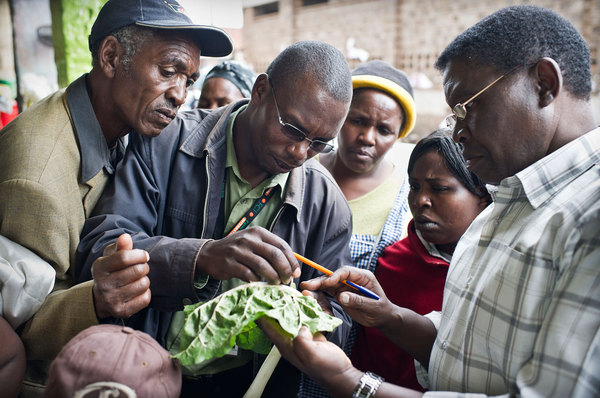Update: Plant Health News (06 Nov 13)
Here’s a taste of some of the latest stories about plant health, including a bumper harvest for Bangladesh from stress tolerant rice varieties, news that plant production could decline as climate change affects soil nutrients, and Autralia’s Minister for the Environment launches a new sustainability app for farmers. Click on the link to read more of the…
The Bird, the Borer and the Bean
A recent study carried out in Costa Rica found that insectivorous birds such as the Yellow Warbler help to reduce infestations of the Coffee Berry Borer Beetle on coffee plantations by 50%. This free pest control service is estimated to save a medium sized coffee farm up to $9,400 per year. The study carried out by…
Plantwise on TV: Launch of Makerere University Training in Uganda
Check out this great coverage of Plantwise coming out of Uganda. Working with the University of Makerere, Plantwise is training young plant doctors to answer the increasing demand for plant clinics across all regions. National television station UBC news interviewed CABI’s Joseph Mulema and key partners on this major development for extension and smallholder farmer…
Update: New Pest & Disease Records (30 Oct 13)
We’ve selected a few of the latest new geographic, host and species records for plant pests and diseases from CAB Abstracts. Records this fortnight include the first report of Zucchini yellow mosaic virus infecting Gherkin (Cucumis anguira) in India, the invasive neotropical ambrosia beetle Platypus parallelus in the Oriental region and its pest status, and non-host…
Could Spider Venom Be Used As A Novel Insecticide For Major Crop Pests?
A new protein discovered in the venom of Australian tarantulas can also kill insect pests that consume the venom orally. The protein known as orally active insecticidal peptide-1 (OAIP-1) was found to be highly toxic to insects that consumed it, with a similar efficacy to the neonicotinoid insecticide imidacloprid. In particular, the protein was found…
Update: Plant Health News (23 Oct 13)
Here’s a taste of some of the latest stories about plant health, including the role of botanic gardens in food security, how grazers and pollinators shape plant evolution and a new soil testing kit designed for smallholder farmers. Click on the link to read more of the latest plant health news!
Have you met Martin? New Plantwise Rwanda video featured on DailyDoGooder.com
If you have not had the opportunity to view the new Plantwise video, then please take a look. In these 3 minutes you will meet Martin, a young man working as a plant doctor near Kigali, Rwanda. Find out why he joined Plantwise and start to help farmers defend their vital crops against plant pests.…
Something to be optimistic about this World Food Day
Today, October 16th, marks the internationally-recognized World Food Day. Around the world, events and media coverage draw awareness to the fact that for over 870 million people, hunger is still a defining daily issue. This figure, though still severe, has fallen one third in the past two decades. Progress is certainly being made, though maybe…
Update: New Pest & Disease Records (16 Oct 13)
We’ve selected a few of the latest new geographic, host and species records for plant pests and diseases from CAB Abstracts. Records this fortnight include observations on the mutualism between armoured scale insects and ants, information about the Colletotrichum orbiculare species complex and the biosecurity implications of new technology and discovery in plant virus research.

